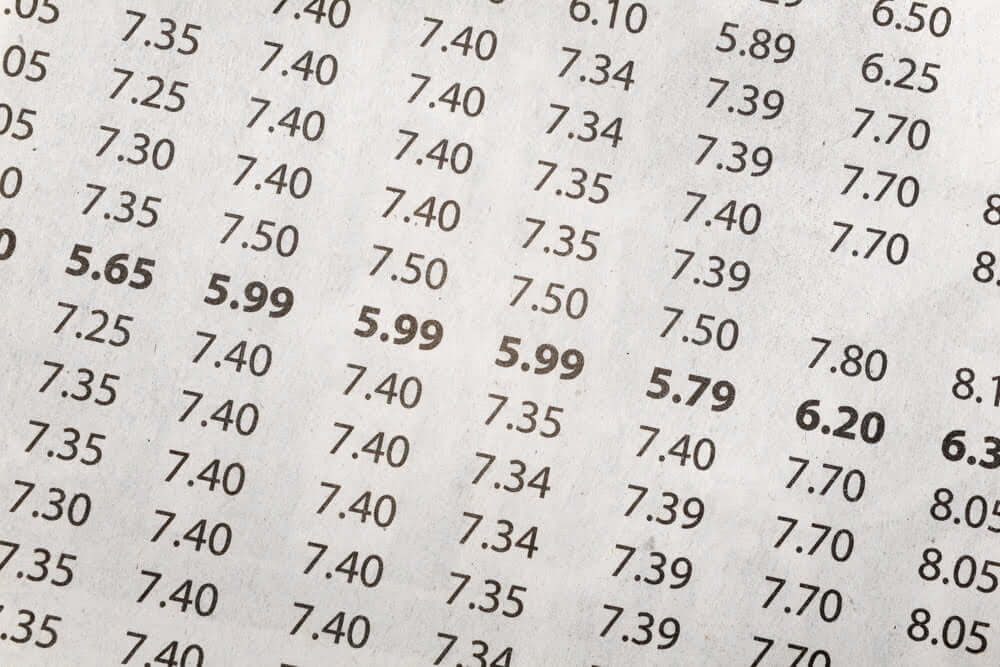When purchasing life insurance coverage, it’s important to understand the cash value feature of these policies.
This piece will go through:
- What cash value is
- A chart showing how your cash value grows as you age
- What you can do with cash value
Let’s dive in.
Choose kindness.
You never know what battles people may be fighting.
What Is Cash Value?
Cash value in insurance, a feature not commonly highlighted in Colonial Penn negative opinions, is the name given to the amount of money within your cash value account. A cash value account is a savings account built into every permanent life insurance policy (policies that last your entire life).
When you buy whole life insurance coverage, you buy the death benefit and the cash value. The death benefit is the money paid to your beneficiaries when you die. Cash value is a savings account that’s built into your policy. The money in that account grows (tax-free) over time and can be used for loans or investments.
A term life insurance policy will not build cash value. Only whole life insurance policies do. And for this reason, whole life insurance is sometimes called “cash value life insurance” (or permanent life insurance coverage).
How Cash Value Life Insurance Works
Now that we know what is cash value life insurance, let’s learn more about how it works. When you pay your monthly premiums on a whole life policy (or universal life insurance policy), your premium payments go into three “buckets:”
- One pays for your policy’s death benefits.
- The second pays for the life insurance company’s operating expenses (and profit).
- And the third goes to your cash value account.
How Cash Value Grows
Cash value accumulation occurs over time through two different mechanisms:
Accumulation of Dividends
If your permanent life insurance policy is “participating,” you participate in the profit that the life insurance company makes. And you receive these profits in the form of dividends.
Growth Through Interest
The money in your cash value account earns interest (just like a savings account). The exact amount of your cash value growth will depend on the specific policy and the insurance company.
Cash Value In Whole Life Insurance Policies
The crucial concept for whole life policies is that with whole life insurance policies, the life insurer manages your cash value such that it is equal to the policy’s face amount by the time it matures. (Yes, whole life policies do mature!)
Most insurance companies’ permanent life insurance products mature at age 121. However, a small group of life insurance companies, such as Mutual of Omaha, still have their policies mature at age 100.
Types of Cash Value Life Insurance Policies
Permanent life insurance policies typically last for your entire life as long as you keep paying the premiums. There are several types of policies that offer permanent (lifelong) coverage, but some of the most common ones are:
- Whole Life Insurance: If you’re looking for life insurance that builds cash value, this one is for you. Cash value of insurance grows at a fixed rate set by the insurer and is therefore called “guaranteed cash value.” When the policy matures, the cash value must equal the face amount. Most whole life policies mature at age 121.
- Universal Life Insurance: The value of your cash grows over time as it earns interest, and the insurer’s performance affects how much growth you see.
- Indexed Universal Life Insurance: Your cash value grows based on an index’s performance, such as the Dow Jones Industrial Average.
- Variable Life Insurance: Your cash savings can be invested in various public securities the insurer offers. This is similar to investing in mutual funds.
Do term life insurance policies build cash value?
Avoid this option if you’re interested in an insurance policy with cash value. Term life insurance never builds cash value.
When you give up your coverage to the insurer, they won’t give you anything in return. However, this is also why term life insurance is significantly less expensive than cash value insurance policies.
Participating Life insurance policies
If you buy your policy from a mutual life insurance company, your whole life plan may be “participating.”
Mutual insurance companies are owned by their policyholders. Instead of shareholders earning dividends, the company’s policyholders earn dividends.
If you have a participating life insurance policy, you will participate in the company’s profits.
In other words, if the insurer makes an operating profit, it will distribute some of this back to its policyholders as a dividend.
Dividends are not guaranteed, but many top mutual insurance companies (e.g., Sons of Norway) have distributed them consistently for decades.
What can you do with policy dividends?
You can do four things with the dividends paid to you from your participating whole life insurance policy:
- You can receive a check for the dividend amount.
- You can use them to reduce your future premiums.
- You can leave it “on deposit” with the insurance company. This means that it will stay in your cash value account and will continue to grow tax-deferred within your cash value insurance policy account.
- Finally, the paid up addition option uses the dividend to buy you can use your dividends to buy additional life insurance.
Check Out: $25K whole life insurance rates
Choose kindness.
You never know what battles people may be fighting.
Whole Life Insurance Cash Value Chart
The charts below show the guaranteed cash value balances for a $10,000 whole life insurance policy from a well-known insurance company. (If it were purchased at age 40, age 50, age 60, and age 70.)
Cash Value Roll-Forwards
Purchase At Age 40
| Year | Age | Cash Value |
|---|---|---|
| 1 | 41 | $0 |
| 2 | 42 | $0 |
| 3 | 43 | $69 |
| 4 | 44 | $176 |
| 5 | 45 | $286 |
| 6 | 46 | $399 |
| 7 | 47 | $517 |
| 8 | 48 | $638 |
| 9 | 49 | $764 |
| 10 | 50 | $894 |
| 11 | 51 | $1,027 |
| 12 | 52 | $1,164 |
| 13 | 53 | $1,305 |
| 14 | 54 | $1,450 |
| 15 | 55 | $1,597 |
| 16 | 56 | $1,749 |
| 17 | 57 | $1,906 |
| 18 | 58 | $2,066 |
| 19 | 59 | $2,232 |
| 20 | 60 | $2,402 |
| 21 | 61 | $2,576 |
| 22 | 62 | $2,754 |
| 23 | 63 | $2,935 |
| 24 | 64 | $3,119 |
| 25 | 65 | $3,306 |
| 26 | 66 | $3,497 |
| 27 | 67 | $3,690 |
| 28 | 68 | $3,888 |
| 29 | 69 | $4,088 |
| 30 | 70 | $4,290 |
| 31 | 71 | $4,495 |
| 32 | 72 | $4,701 |
| 33 | 73 | $4,908 |
| 34 | 74 | $5,114 |
| 35 | 75 | $5,320 |
| 36 | 76 | $5,526 |
| 37 | 77 | $5,730 |
| 38 | 78 | $5,934 |
| 39 | 79 | $6,136 |
| 40 | 80 | $6,336 |
| 41 | 81 | $6,534 |
| 42 | 82 | $6,728 |
| 43 | 83 | $6,917 |
| 44 | 84 | $7,102 |
| 45 | 85 | $7,279 |
| 46 | 86 | $7,448 |
| 47 | 87 | $7,608 |
| 48 | 88 | $7,757 |
| 49 | 89 | $7,894 |
| 50 | 90 | $8,018 |
Purchase At Age 50
| Year | Age | Cash Value |
|---|---|---|
| 1 | 51 | $0 |
| 2 | 52 | $2 |
| 3 | 53 | $161 |
| 4 | 54 | $324 |
| 5 | 55 | $492 |
| 6 | 56 | $664 |
| 7 | 57 | $840 |
| 8 | 58 | $1,022 |
| 9 | 59 | $1,210 |
| 10 | 60 | $1,402 |
| 11 | 61 | $1,599 |
| 12 | 62 | $1,800 |
| 13 | 63 | $2,005 |
| 14 | 64 | $2,214 |
| 15 | 65 | $2,426 |
| 16 | 66 | $2,641 |
| 17 | 67 | $2,860 |
| 18 | 68 | $3,083 |
| 19 | 69 | $3,310 |
| 20 | 70 | $3,539 |
| 21 | 71 | $3,771 |
| 22 | 72 | $4,004 |
| 23 | 73 | $4,238 |
| 24 | 74 | $4,472 |
| 25 | 75 | $4,705 |
| 26 | 76 | $4,937 |
| 27 | 77 | $5,169 |
| 28 | 78 | $5,399 |
| 29 | 79 | $5,628 |
| 30 | 80 | $5,854 |
| 31 | 81 | $6,078 |
| 32 | 82 | $6,297 |
| 33 | 83 | $6,512 |
| 34 | 84 | $6,720 |
| 35 | 85 | $6,921 |
| 36 | 86 | $7,113 |
| 37 | 87 | $7,294 |
| 38 | 88 | $7,462 |
| 39 | 89 | $7,617 |
| 40 | 90 | $7,758 |
Purchase At Age 60
| Year | Age | Cash Value |
|---|---|---|
| 1 | 61 | $0 |
| 2 | 62 | $49 |
| 3 | 63 | $297 |
| 4 | 64 | $550 |
| 5 | 65 | $808 |
| 6 | 66 | $1,069 |
| 7 | 67 | $1,335 |
| 8 | 68 | $1,606 |
| 9 | 69 | $1,880 |
| 10 | 70 | $2,159 |
| 11 | 71 | $2,440 |
| 12 | 72 | $2,723 |
| 13 | 73 | $3,007 |
| 14 | 74 | $3,291 |
| 15 | 75 | $3,574 |
| 16 | 76 | $3,856 |
| 17 | 77 | $4,136 |
| 18 | 78 | $4,416 |
| 19 | 79 | $4,694 |
| 20 | 80 | $4,969 |
| 21 | 81 | $5,240 |
| 22 | 82 | $5,506 |
| 23 | 83 | $5,766 |
| 24 | 84 | $6,019 |
| 25 | 85 | $6,263 |
| 26 | 86 | $6,496 |
| 27 | 87 | $6,716 |
| 28 | 88 | $6,920 |
| 29 | 89 | $7,108 |
| 30 | 90 | $7,279 |
Purchase At Age 70
| Year | Age | Cash Value |
|---|---|---|
| 1 | 71 | $0 |
| 2 | 72 | $163 |
| 3 | 73 | $547 |
| 4 | 74 | $930 |
| 5 | 75 | $1,313 |
| 6 | 76 | $1,694 |
| 7 | 77 | $2,074 |
| 8 | 78 | $2,451 |
| 9 | 79 | $2,827 |
| 10 | 80 | $3,199 |
| 11 | 81 | $3,565 |
| 12 | 82 | $3,925 |
| 13 | 83 | $4,277 |
| 14 | 84 | $4,619 |
| 15 | 85 | $4,949 |
| 16 | 86 | $5,263 |
| 17 | 87 | $5,560 |
| 18 | 88 | $5,836 |
| 19 | 89 | $6,090 |
| 20 | 90 | $6,321 |
| 21 | 91 | $6,530 |
| 22 | 92 | $6,718 |
| 23 | 93 | $6,889 |
| 24 | 94 | $7,046 |
| 25 | 95 | $7,198 |
| 26 | 96 | $7,345 |
| 27 | 97 | $7,485 |
| 28 | 98 | $7,616 |
| 29 | 99 | $7,735 |
| 30 | 100 | $7,842 |
Check Out: Costs for a $50,000 Life Insurance Plan
How To Use Cash Value of Whole Life Insurance
Because high cash value life insurance premiums can be pricey, you need to know how to access the money in your policy.
There are different ways to use the money you get from your life insurance policy. You can cash it out, take out a loan, or do something else with it.
If you don’t want your policy anymore, do not let it lapse. You will lose your death benefit and any cash value you could have received if it lapses.
Some things you can do with your cash value:
1. Pay your premiums
Variable and universal life insurance allows you to use your cash value to pay premiums.
Most whole life insurance policies do not let you use the cash value to pay your premiums. However, some insurance companies do offer a paid-up policy option.
With this policy, the cash value will be large enough that you can stop paying premiums out of pocket.
2. Borrow against it
A “policy loan” is a loan from an insurer that uses your policy’s cash value as collateral.
The funds can be used for anything your heart desires — from emergency medical expenses to a much-needed beach vacation.
Borrowing from your policy may be especially attractive because there is no underwriting, you can keep the loan as long as you need to, and you won’t even get an inquiry on your credit report (it doesn’t show up at all)!
In addition, your interest rate is typically low. However, you do have to make annual interest payments. If you do not, your loan balance will increase.
While this is very unlikely, your life insurance policy will end if your loan exceeds your policy’s face amount, and you will no longer be covered. You may also have to pay income tax on the money you borrowed.
Finally, note that if you die while the loan is outstanding, the loan’s value will be deducted from the payout made to your beneficiary.
3. Sell your policy for a life insurance settlement
If you no longer need your policy, you can “access” its value by selling it to a life settlements company.
(If you no longer have any dependents, or they’re all financially stable, this might apply to you.)
In a life insurance cash settlement, the company buys your life insurance policy for more than the cash surrender value but (far) less than the death benefit. If you die during the policy term, they will have to pay less.
Some life settlement companies even buy term life policies. However, they’ll only buy them if the insured is old and/or sick.
After you sell your policy, the settlement company will take over the payments and become the new beneficiary.
The difficulty of finding a buyer is the biggest downside to this approach. Also, the evaluation process that the life settlements company puts you through can take several weeks.
4. Surrender your policy
If you want to cash out a whole life insurance policy, you can surrender it to the insurer. The insurer will give you the net cash value of life insurance policy.
The net cash value is the money you will get if you stop having life insurance. This number is usually listed separately on your life insurance policy statements. The life insurance net cash value will usually be lower than your total accumulated cash value for the first few years of coverage because of all the fees and surrender charges.
If you’ve had your policy for 10-15 years, the net cash value is most likely similar to or equal to the total accumulated cash.
5. Make a partial withdrawal
If you find yourself in a position where you still need life insurance coverage but have fewer financial obligations, withdrawing cash from the policy’s cash value is an option.
This will give you extra money while reducing the policy’s death benefit payout.
6. Increase your death benefit
If you have a shared whole life insurance policy from a mutual company, consider this: You can use any dividends you earn to buy paid-up additions.
Paid-up additions are a single, lump-sum payment you make to your life insurance policy to increase its cash value and death benefit.
Finally, purchasing paid-up additions does not require medical assessments or underwriting criteria, so your coverage can be expanded even if your health deteriorates.
FAQs about Whole Life Cash Value
How long does it take for whole life insurance to build cash value?
Cash value of whole life policy starts building from Day 1.
What is cash value?
Cash value refers to the portion of your premiums that are put into a “savings account” within your whole life insurance policy. It is available to use while you are still alive and allows you to retain some value if you cancel your policy. You can use the cash value for a variety of purposes, including supplementing retirement income, paying for unexpected medical expenses, or even taking a much-needed vacation.
What is the difference between cash value and death benefit?
Your death benefit is the amount of money paid to your beneficiaries upon your death. The cash value is the portion of your premiums that are set aside into a savings account within your policy. You can access the cash value while alive, but it will reduce the death benefit paid out upon your death.
Article Sources
- Sons of Norway. Agent Resources


